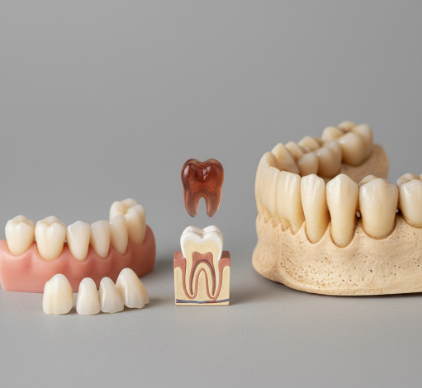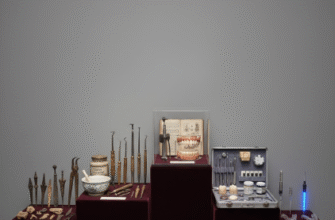Ever wondered why you, your dog, or the cat next door get a baby set of teeth and then an adult one, but that’s usually it? Meanwhile, creatures like sharks seem to have an endless supply, constantly shedding and replacing. This pattern of having just two successive sets of teeth, known as
diphyodonty, is a hallmark of mammals, and there are some pretty solid biological reasons behind this seemingly limited dental plan.
Imagine trying to fit a full set of adult-sized human teeth into a baby’s tiny jaw. It’s a comical, if not impossible, image. Mammals, by their very nature, start small and grow significantly. A single set of teeth present from birth would either be ridiculously oversized for an infant, hindering suckling and proper jaw development, or far too small and insufficient for the powerful chewing and diverse diet of an adult. The first set of teeth, often called milk teeth or deciduous teeth, are perfectly proportioned for the smaller jaw of a young mammal. As the jaw grows, these smaller teeth would become widely spaced and inadequate for processing food effectively. A changeover is essential to accommodate this growth.
Furthermore, the dietary needs of a young mammal are vastly different from those of an adult. Initially, an infant mammal typically relies on mother’s milk, a liquid diet that doesn’t require complex chewing. The milk teeth are sufficient for this early phase and for transitioning to softer solid foods. As the mammal matures, its diet often becomes more complex and demanding, requiring specialized teeth for tearing, grinding, or crushing. The permanent teeth are designed for these adult dietary challenges, offering greater strength and a wider array of shapes suited for the long haul.
Why Not an Endless Supply? The Need for Precision
So, if one set isn’t enough, why not have many sets, like sharks or reptiles? The answer lies in a key mammalian innovation:
precise occlusion. This fancy term refers to the way our upper and lower teeth fit together, almost like a set of perfectly matched gears. This precise interdigitation is crucial for efficient food processing. Herbivores need it to grind tough plant material, carnivores to shear flesh, and omnivores for a bit of everything. Constant tooth replacement, as seen in polyphyodont animals (those with many sets of teeth), would make maintaining such a precise bite nearly impossible. Each new tooth erupting at a different time could disrupt the overall alignment, reducing chewing efficiency.
Mammalian teeth are also incredibly complex structures. They aren’t just simple pegs. Think about your own molars with their cusps and grooves, or the sharp edges of your incisors. Developing these intricate shapes, embedding them firmly into the jawbone with strong roots (a condition called thecodonty), and ensuring they align perfectly is a biologically expensive process. It takes a lot of energy and resources. Limiting tooth development to two well-formed sets is an energetically conservative strategy compared to continuously producing and replacing teeth throughout life. Nature tends to favor efficiency, and for mammals, two sets hit a sweet spot of functionality and resource management.
The way mammalian teeth are anchored also plays a role. Being set in deep sockets in the jawbone provides incredible stability and strength for withstanding the forces of chewing tough foods. Replacing such deeply rooted teeth frequently could risk damaging the jawbone and would be a far more involved process than replacing the more superficially attached teeth of many reptiles or fish. The two-set system allows for a stable, strong, and precisely aligned dental arcade for the majority of an adult mammal’s life.
Diphyodonty, the trait of having two successive sets of teeth (deciduous and permanent), is a defining characteristic of most mammals. This system is intricately linked to mammalian growth patterns, dietary changes from infancy to adulthood, and the need for precise occlusion for efficient food processing. The first set accommodates a small jaw and early diet, while the second, permanent set is built for the demands of adult life.
The Two-Act Play of Mammalian Teeth
The two sets of teeth mammals get aren’t just reruns; they are distinct acts in an animal’s life story, each with a specific role and design.
Act One: The Milk Teeth – Paving the Way
The first set, the
deciduous teeth (or milk teeth, or baby teeth), are the pioneers. They are generally smaller, fewer in number, and have shallower roots compared to their permanent successors. Their primary job is to serve the young mammal during its early growth phase. They help with the initial intake of non-milk foods, guide the eruption pathway for the permanent teeth that are developing beneath them, and play a role in the proper development of speech in humans. Their whiter appearance is due to thinner enamel. Eventually, as the jaw expands and the permanent teeth mature, the roots of the milk teeth are resorbed, causing them to loosen and fall out, making way for the adult set.
This transition is a carefully orchestrated biological process. It’s not a haphazard loss; rather, it’s timed to coincide with the jaw’s readiness for larger, stronger teeth. The presence of milk teeth ensures that the young mammal isn’t toothless and helpless while its jaw is still growing and its permanent dentition is forming.
Act Two: The Permanent Set – Built to Last
Following the exfoliation of the milk teeth, the
permanent teeth erupt. These are the teeth an adult mammal will (ideally) have for the rest of its life. They are larger, more numerous, and have much stronger, longer roots anchoring them firmly in the jawbone. Their enamel is thicker, providing greater durability against wear and tear from a lifetime of chewing. The permanent dentition is also more specialized, with distinct incisors for cutting, canines for tearing, and premolars and molars for grinding and crushing. This specialization reflects the diverse and often tough diets of adult mammals.
The precise number and arrangement of these permanent teeth vary significantly between different mammalian species, beautifully adapted to their specific ecological niches and dietary preferences. For instance, a carnivorous wolf will have prominent canines and shearing carnassials, while a herbivorous cow will have broad, flat molars for grinding tough grasses. Despite these variations, the underlying principle of a single, durable, and highly occluding permanent set remains a common thread.
An Evolutionary Masterstroke
The evolution of diphyodonty in mammals is closely tied to other signature mammalian traits, such as suckling (lactation) and warm-bloodedness (endothermy). Suckling necessitates a period where complex chewing isn’t required, making an initial, simpler set of teeth adequate. As the young mammal weans and transitions to solid food, and as its skull and jaw grow, the second, more robust set becomes necessary.
Warm-bloodedness means mammals have high metabolic rates and need to process food efficiently to fuel their bodies. The development of precise occlusion, supported by the two-set tooth system, was a critical step in achieving this efficient food processing. Unlike reptiles, whose teeth often primarily serve to grip prey that is then swallowed whole or in large chunks, mammals typically engage in extensive oral processing (mastication). This breaks food down into smaller particles, increasing the surface area for digestive enzymes to work, thus maximizing nutrient extraction.
So, while it might seem like a limitation to only get two shots at your teeth, this system is actually a highly sophisticated evolutionary adaptation. It balances the needs of a growing body, changing diets, the mechanical demands of complex chewing, and the energetic costs of tooth development. It ensures that for the crucial adult phase of life, mammals are equipped with a dental toolkit that is both powerful and precise, a testament to nature’s ingenuity in solving biological challenges. For most mammals, these two sets are just right, providing a lifetime of service.









